Feeding a family isn’t cheap these days, and it only gets more expensive with each additional mouth. I’ve always wondered about the cost between Grocery Shopping and Home-grown Food, but never really sat down to crunch the numbers … until now!
Eating healthy is also more expensive than eating processed foods loaded with artificial ingredients and sodium. In fact, following the government’s recommended dietary advice can add 10 percent to your monthly bill. Fresh fruits and vegetables are always more expensive than processed, canned, or frozen foods. If you want to go completely organic, count on spending sometimes double that.
The Criteria for the”Food War:”
We have to compare apples-to-apples and … well you get the idea. So, we’ll look at:
- Expense
- Health – Mental and Physical
- Waste
- Time
In the expenses, we’ll compare certain food:
- Lettuce
- Carrots
- Tomatoes
- Basil
- Apples
- Eggs
We’re also going to use $15 per hour for any labor costs or time spent.
And in this corner … Grocery Store!
According to the USDA 2017 Cost of Food Report, the average American spends between $100 to $300 per person per month on groceries. It may be higher or lower based on where you live. (1)
Grocery Store Expense (This is from your average local store, prices may vary in your area)
Lettuce
Organic Price: $1.69/head
Non-organic Price: $0.99/head
Carrots (3 lbs.)
Organic Price: $3.49
Non-organic Price: $2.99
Tomatoes (Heirloom)
Organic Price: No organics available when I went shopping
Non-organic Price: $2.99/lbs.
Basil
Organic Price: $2.99/pkg.
Non-organic Price: $1.99/pkg.
Apples
Organic Price: $1.99/lbs.
Non-organic Price: $0.99/lbs.
Eggs (1 dozen)
Organic Price: $5.69
Non-organic Price: $1.99
Most of the non-organic produce was from Mexico or Peru, and a lot of the organic produce was also.
On average, I spent about $125 per week for my family of three. I bought organic produce, grass-fed, free-range, no hormone meats and eggs (sometimes from the store, but usually from a local farmer).
Health – Mental and Physical
In 2016, the average American spent $10,345 annually on health care (insurance premiums, deductibles, co-payments, prescriptions, and medicines). (2)
According to a The Atlantic 2014 article, healthcare was the number one cause of personal bankruptcy and was responsible for more collections than credit cards. Forty percent of Americans owe money for times they were sick. (3)
More than 71 percent of Americans are overweight or obese, and 16 percent of children and adolescents are struggling with obesity (4)
There are four contributing factors: (5)
- Processed foods
- Portion size
- Fast food
- Being less active
Let’s not forget to add in the hassle and headache it can take to go to the grocery store. You might not be able to quantify it, but just bear it in mind.
Can you be healthy eating from the grocery store? Check out this chapter of the Grow Book!
Waste
The average American throws away 4.4 pounds of trash each day. The annual weight of trash from the entire country equals 254 million tons, that is the same as 1.2 million blue whales, and would reach to the moon and back 25 times, a journey of 11,534,090 miles. (6)
The sad thing is that you probably live closer to one of the 2,000 active landfills than you might think. Some inactive landfills have become public parks. (6)
Landfills also produce millions of cubic feet of methane gas each day. What impact does this have on our health?
Think of the waste from your groceries: food packaging, plastic produce bags, plastic bottles, twist ties, Styrofoam, and grocery bags that come along with buying groceries. This waste has to go somewhere. I kept track for several months of my grocery shopping days. Over half of my grocery list had some sort of packaging, which added up to about 10 lbs. a week.
Some cities are beginning to charge for every bag of garbage you put in the bin. The average cost is $2 per bag.
The good news is that 34.3 percent of garbage is being recycled or composted each year. That prevents 87.2 million tons of material from going into the landfill. (6)
Think about how much food you throw away because it spoiled in the refrigerator. Waste adds up!
Time
It took me an hour to shop, but I also spent about 30 minutes to 45 minutes preparing to go grocery shopping, making my list, and seeing what needed to be bought. It took about 15 minutes each way to get to and from the store. The parking lot is always a madhouse. Add the stress of that in the Health section above.
Pros of going grocery shopping:
- You can have your favorite food any time.
- It’s convenient to run to the store if you need something.
- Loyalty cards/Cash-back programs
- Prepackaged, quick food
And in this corner … Home Grown Food!
(And the crowd goes wild!)
Even a small garden plot, can yield an estimated 7 lbs. of fresh produce per square foot. (It depends on where you live and what you plant.)
Expense
You will have an initial investment, which includes soil conditioning, garden beds, and seeds or plants. Based on my own start-up costs, I’m saying $250 for the veggies and $300 for the chickens. You can certainly do it cheaper. We’ll have more on that in future posts. I’ll average this out over the year.
Lettuce
Seeds: $2.50/pkt
Watering: 1 hour/every 3 days.
Labor: Minimal. I was surprised how easy this was to grow.
Final Yield: I had continuous salad mix by harvesting the outside leaves every couple of days. Estimated 5 lbs. throughout the season. I had a cup of salad greens every day for four months. I can definitely extend the season and produce more.
Carrots
Heirloom Seeds: $3.00/pkt
Watering on system: 1 hour/every 3 days
Labor: Minimal. Didn’t do much at all. They grew really well without much help.
Final yield: About 6 lbs. Plenty to eat raw and dehydrate, can, and freeze.
Tomatoes
Heirloom Seeds: $2.50 – $3.00/pkt Heirloom Plants: $6.00 ea.
Watering on system: 1 hour/every 3 days
Labor: Average. About 15 minutes every other day, nipping suckers, watching for signs of disease or pests. My first seedlings didn’t make it, so I replanted heirloom plants.
Final Yield: A little less than 80 lbs. of tomatoes from 4 plants, enough to eat fresh and preserve for later in the year.
Basil (It’s difficult to grow basil from seeds)
1 Plant: $3.00 – $5.95
Watering on system: 1 hour/ every 3 days
Labor: minimal. Harvest leaves every few days. Grew like a weed.
Yield: Off of 2 plants, I got enough for 12 pint jars of pesto and a 16-oz. container of dried.
Apples
Bare tree: $20-$25
Watering: 1 hour/ every 3 days
Fertilizer: $10
Kaolin clay: $12
Labor: Intensive. planting, pruning, training, thinning, treating, picking up fallen fruit. About 20 minutes every other day.
Eggs (only have 6 laying hens and no rooster)
Feed: $100/mo. (This can be reduced with a little planning and a more mature garden.)
Water: 1 gallon per day
Room: about 100 square feet, including the coop and run. They free-range, too!
Labor: I do the deep-litter method, so there isn’t a lot of maintenance. I spend on average 30 minutes every day, checking, gathering eggs, feeding, cleaning the roost, and giving love.
Yield: average 2 dozen eggs/week. We keep one and sell one.
Health – Mental and Physical
New studies are showing that the microbes in the soil actually work a lot like Prozac. (7) They give you good feelings, well-being, and happiness.
The food is healthy, too. You know exactly what was used to grow your groceries.
And let’s not forget the exercise factor. You can burn anywhere from 200 to 600 calories per hour gardening.
Waste
Growing your own groceries has minimal trash.
My family is still buying some food from the grocery store. Maybe one day, I’ll grow my own quinoa.
Now that I’m conscious of food packaging. I look for packaged food that can be recycled or composted. If not, I try not to buy it. My garbage went from one full bag of garbage every three days to a handful of recyclables, large bucketfuls of compostables, and less than 2 lbs. of actual garbage each month.
I’m still trying to minimize my footprint. The goal is zero-waste, or at least as close to it as possible!
Time
In my small garden (about 100 square feet, if you put it together), I spend an average of 20 hours each month in the garden on various chores during the growing season between February and November. I spend about five or so in the winter months on greens, looking through heirloom seed catalogs, and planning next year’s garden.
All of my beds are on a timed and water-regulated irrigation system. In other words, if it rains, the system doesn’t come on. This saves water and time.
The chickens take an average of 30 minutes-a-day winter and summer. They are quite the characters, so they provide entertainment as well.
I didn’t keep track of my preserving time (canning, drying, and freezing), so an estimate is about 10 to 20 hours total for the entire season.
Of course, I see this as time well spent. Twenty hours in the garden or 30 minutes for the chickens could easily be more, because I love it so much.
And the winner is…!
As far as cost goes, fresh food from the garden wins by a slim margin. However, it is difficult to quantify your health and happiness into this equation.
I know for me. I’m happier when I’m gardening. I know I’m healthier because of the exercise and eating good, clean food. The dollar amount is interesting, but almost inconsequential.
Resources:
- [https://www.cnpp.usda.gov/USDAFoodPlansCostofFood]
- Department of Health and Human Services;[ https://aspe.hhs.gov/pdf-report/individual-market-premium-changes-2013-2017]
- The Atlantic [https://www.theatlantic.com/health/archive/2014/10/why-americans-are-drowning-in-medical-debt/381163/]
- [https://www.cdc.gov/nchs/fastats/obesity-overweight.htm]
- American Cancer Society: [ https://www.cancer.org/cancer/cancer-causes/diet-physical-activity/body-weight-and-cancer-risk/health-issues.html]
- Save on Energy [ https://www.cancer.org/cancer/cancer-causes/diet-physical-activity/body-weight-and-cancer-risk/health-issues.html ]
- [http://www.huffingtonpost.com/dr-larry-dossey/is-dirt-the-new-prozac_b_256625.html]
Do you grow your own food and medicine? What savings have you seen? Tell us in the comments below.
Access our growing selection of Downloadable eBooks…
…. On topics that include growing your own food, herbal medicine, homesteading, raising livestock, and more!
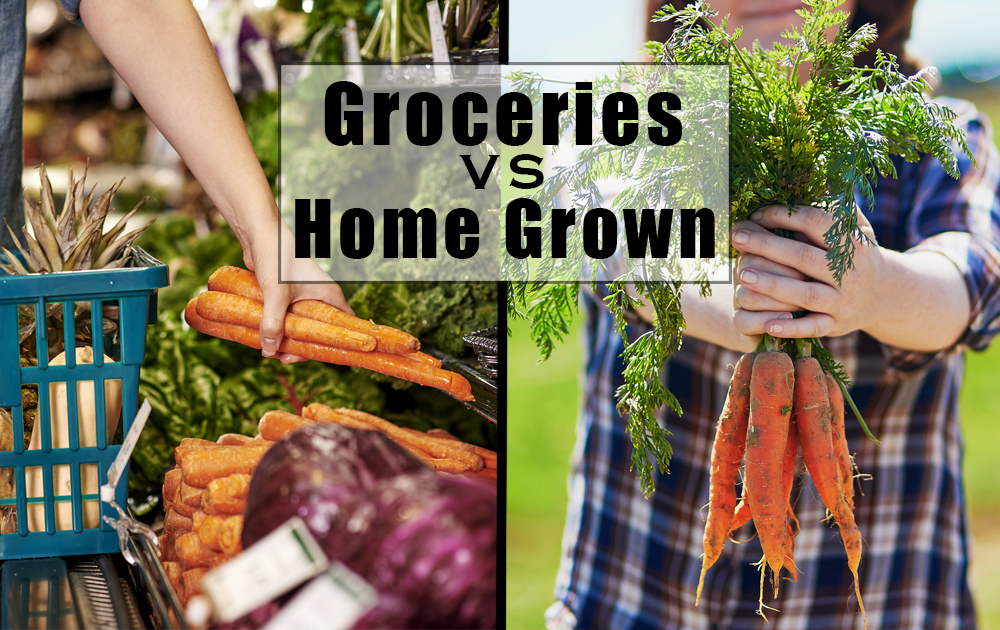
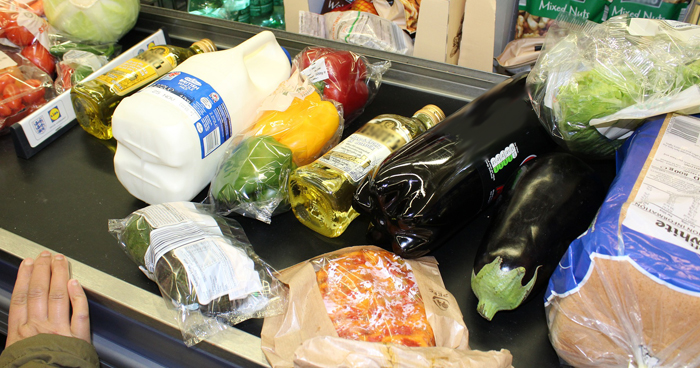
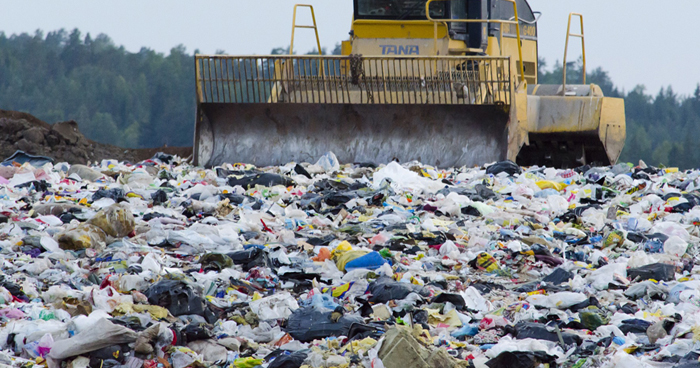
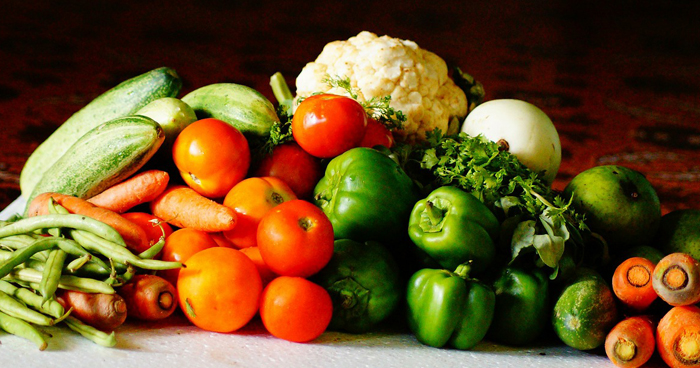
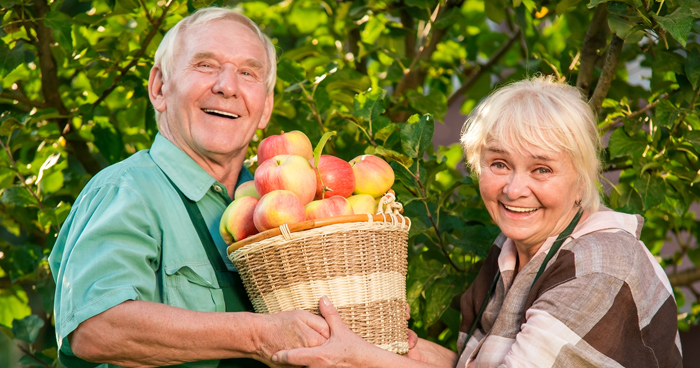
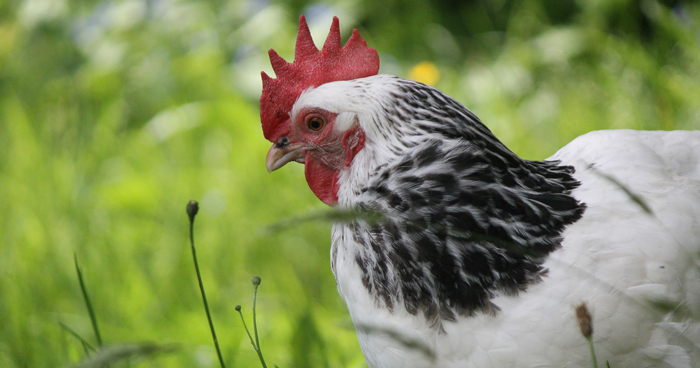









COMMENTS(29)
Heather,
From your experiment, were you able to completely feed your family from the garden, without resorting to grocery store items?
We have six hens too, mixed ages, but none older than 3. We’ve gotten 2 dozen eggs in a week, but only during their peak laying time in the spring. After that, it’s been more like a dozen to a dozen and a half. (the heat of summer seems to slow them down) and maybe only a dozen (or less) a week in the off season: winter. Yet, all the while, they’re eating feed.
Which then leads me to wonder how the match-up fares over the winter months when the garden is producing nothing.
I quite agree that the fresh-grown is better. I’m trying to do that more myself. It’s just hard to compete with industrial-supplied foods on a cost-per-pound basis. Wheat and corn are prime examples.
Your point about trash is a good one. Growing it yourself, you usually end up with only compostables (or chicken food/scraps), not packaging. Since I don’t pay for trash removal (town transfer station), it’s not a financial burden.
Thanks for the article.
— Mic
— mic-roland.com
Hey Mic, no not completely. I’m still working on it. I totally agree with peak season production from the “ladies.” I found the same thing. The heat of summer slowed them down, but it was still enough for my family.
Good question about the winter months. I didn’t do the comparison then, but I also had a lot stored. What are your thoughts on that?
Hi Heather,
The challenge in such garden vs. stores comparisons is the limitation of a single place vs. the globe. My tomatoes will compare favorably to store tomatoes — in September. The store tomato will win in December, or April, by default; I won’t have any garden tomatoes then.
The same goes for just about every garden produce. Whatever the plant is: zucchini, potato, green beans, etc., they become ‘food’ for only (maybe) 1 month out of 12. What does the homesteader do in the other 11 months?
The Modern Food Industry has the advantage of being able to draw from gardens/farms around the country or globe. Tomatoes tend to be ‘ripe’ somewhere, every month. Modern Food ships them to our stores. It’s hard to compete with the whole world.
That said, I’ve been working on time-shifting my garden produce. This is really just an ancient practice, of course. I grow dent corn and dry beans that I can keep for months and use when I want to. Winter squash stores well, so can be eaten over several months. Cabbage is great for fresh coleslaw, but also gets fermented into sauerkraut to eat during the other 11 months, etc. etc. Canning is good for other perishables.
Even so, I don’t have enough arable land to produce 12 months of food for the household. When my dry corn is gone, store grain wins the comparison by default.
So, maybe a companion article might be comparing the various categories you did here, during January: when the home-goods would be dried, stored or canned. How does a pint jar of home-canned tomatoes compare to a 16 oz can of store-brand tomatoes?
There’s more to the comparison than simply money, of course. Being able to produce food (even if dollar for dollar NOT cheaper) helps one not be slave-ishly dependent on Modern Food.
Thanks for the question.
— Mic
— mic-roland.com
This was something I became a lot more aware of when I was getting CSA boxes a couple times per month. I’d get a whole lot of a couple things, and I can only eat so many potatoes or oranges in a couple weeks. Now working more towards growing my own food, and the CSA combined, it seems off to have a grocery produce section full of almost everything all the time.
So as I learn more about the growing cycles, I’m now also trying to adjust my eating habits to eat in cycles to match. Definitely tricky to try to do that, but it’s making sense to me to try. I’m sure I’ve still got many learning adventures ahead of me in the canning/preserving/fermenting side of things. So far for me – preserving = cut up the apricots and freeze for smoothies, and juice the extra oranges or leafy greens for ice cube trays. That’s the extent of my preserving at this point, though.
I really enjoyed reading this article. I have grown heirloom tomatoes, cucumbers. Midget melons, green peppers, rosebushes, etc and I loved the taste of growing them at home. Store bought might be a convenience; but the flavors of the vegetables is a far cry
from home grown. I love the beauty and
fragrance of roses.
I have always enjoyed the whole process of getting ready for growing season. That would entail starting some plants indoors. I actually never looked at it dollar for dollar but for the therapeutic
element of growing fresh produce without
harmful pesticides and being outdoors
tending to crops that blossom and produce wonderful tasting food.
Thanks Sue! I totally agree. The grocery store might be convenient, but “blech” on the taste!
Can’t beat good tasting food, exercise, and beauty, right?!
i am having trouble understanding your costs for chicken feed. $100 per month for 6 hens makes those eggs about $12 a dozen. that can’t be right.
I have trouble believing the $100 per month chicken feed myself. Especially IF a hen eats 100 grams (1/4 pound) per day.
Depending on where you live I guess you could argue 100.00 a month. I can’t imagine it. I have about 15 hens and 1 rooster and I don’t spend near that much and my chickens are fee range also.
Hey Everyone, yeah, I know it’s expensive where I am. Feed prices are going to vary greatly from place to place. I’m looking into alternatives.
If you have suggestions, I’d love to hear it.
Dear friends, thanks for the carefully-analyzed article!
You mention that some day you may grow your own quinoa. Maybe not! I understand that you have to be at an altitude of 8 or 10 thousand feet above sea level to have the UV sparkle it requires. Just as we can’t grow decent wheat in the Andes (no long northern-hemisphere-summer days), I understand quinoa needs the UV you get with less atmosphere between it and the sun!
Worth trying, anyway!
I’m always up for a good experiment! Aren’t you, Sam?
Actually, I didn’t know that about the altitude required for growing Quinoa. However, I’m almost at 8,000 ft., so it might be worth a go.
Raising vegys, herbs & fruit – not cause I need to but because I can. If/when I need to, I have experienced much of the long learning curve and experienced the disappointment of crop failures. ATT household = 1. Fruit trees are young but Grapes and Blackberries do well as are 1st time canteloupe.
$$ – as I rarely purchase vegys or herbs/spices from the store and practice seed saving, the garden pays for itself.
Health – could be imagination but believe that I feel better by consuming fresh unprocessed REAL food, especially when flavored with an assortment of herbs grown. Gardening also provides plenty of sunshine to keep my Vitamin D levels above deficient.
Waste – Trash fee is same regardless of amount. Much valuable ‘trash’ goes into compost barrel. If I used a burn barrel I probably would need to empty 1 barrel every year and drop other items into recycle bins.
Time – Only guessing that I average 2 hour per day, including lawn care.
Love your analysis, JJM! Thank you for sharing!
What a great look at this issue! I agree that home grown is best but I need motivation and to get the family on board
Thanks so much, Michelle! We’re working on a couple of articles about that very issue. Stay tuned!
Here the landfill currently charges $4.00 a bag for trash, but I only bring a couple of bags a month, so it is not too bad. I compost whatever I can and recycle, reuse, or re-purpose most packaging. The grocery stores encourage people to bring their own reusable shopping bags, and the co-op lets you fill your own containers with bulk food.
At best, there are only four months out of the year when I can have fresh food from the garden, so for the rest of the year, it is either preserved or from the grocery store. I try to make the most of it, and am looking at the possibility of extending the season with a small, inexpensive greenhouse.
When I compare commercially grown produce to homegrown, the commercial food seems less expensive, but I believe that money spent on good food saves me from having to spend on doctors and medicine, and you cannot beat the freshness and taste of something just picked from the garden. Of course, there are also the hard to quantify benefits of exercise, fresh air, and sunshine, and the satisfaction of learning to provide for myself.
I totally agree, Debbie! Thank you so much for sharing your story and experience. Wow! $4.00 a bag. I wonder what happens if you’re in an apartment…sounds like another article to me. 🙂
I seed save, so that will cut down the prices of the initial plants. I don’t have Basil, but isn’t it a perennial? If so, that is an initial cost as well. I also count the time weeding, harvesting, preserving as mental health time…to be honest, I purchase produce to supplement my garden (mine is an in-town, raised bed that can’t get the quantities to efficiently preserve) from Amish farms within driving distance…so I would be spending the time/labor for preserving anyway. I am probably mentally justifying having the garden, but it is just so rewarding! (for the record, I have cukes this year, tomatoes volunteer everywhere, had English peas, bush beans, lima beans, crowder peas, squash (they don’t do well for me), earlier I had lettuce, radishes, spinach, some brussel sprouts, mint, ginger, chard, beets, corn, onions, garlic, strawberries and cabbage, but not in great quantities. Hopefully next year I will get pecans and plums, last harvests from these trees in my yard were non-existent, but in years past, EXTREMELY bountiful. I don’t have chickens, but I have a work-friend where I can get a dozen eggs for 2$… free range and antibiotic free.
I want to come live in your garden! It sounds like you’re going to have an abundant harvest!
I learned how good fresh local produce tasted when I tried out a couple CSA’s in my area a couple years ago – I’m in Southern California.
It was the sweet corn that got me. But some of the best tasting veggies/fruits I’ve ever had came from those CSAs. So the ‘grow your own’ bug hit me about the same time. My property was just going to waste with some grass, some dead soil, and a lot of weeds. One orange tree still alive from when I moved in 10 years prior. So I started there – get the weeds out, add compost, and mulch. The dirt was heavy on the sandy side, but you wouldn’t know it – hard and compacted, and after the first raised bed decided I wanted to be planting things in the ground instead. So that’s costing me a bit for compost (too much needed to do myself at this point still) and mulch. But 6 months after I do an area, the soil is back alive and looking much better.
Most things I plant in it these days do pretty well, considering I killed every plant I owned, except one that I can remember, until I was 50.
So I started with the long-term plants – have 6 fruit trees now – a couple of them multi-grafts since my backyard has only about 300sqft planting area, and I do still want to keep some space for a bit of grass for the pooch. Although that space seems to keep getting encroached upon. He seems okay with it, though – more things to investigate.
I’m now working on the veggies/berries/herbs side now to plant things that are expensive to buy – red bell peppers, asparagus, herbs, blueberries, and the things I just love eating so would be buying a lot of – cucumbers, squash, etc… I do a lot of juicing, so most anything can go in there.
I’d like to semi-retire in about a year and a half. So growing my own food is actually part of that plan. Will have more time to take care of it, but less money to pay for the good stuff (organic and/or CSA). So the better I can grow it myself, the better I can keep eating.
I can also add in the nutrients to the soil so that the end up on the fruits/veggies. I’ve heard/read (not sure how true it is) that the fruits/veggies in the stores today are a lot less nutrient-dense compared to 30-40 years ago because farmers don’t put all the nutrients in the soil – only those that make it look big and healthy. One place even said you’d have to eat 5 oranges today to match the nutrients in an orange 30-40 years ago?
So I figure my savings are in some different ways…
More nutrient-dense food, so I need less of it to stay healthy.
Many I know pay $10-$20 month for gym membership – not needed here – I even tell them they can workout for free at my place, I’ll even provide equipment (shovel, etc…) – no takers yet.
Less water use compared to if I were trying to keep a full lawn looking green and good – I’m also guessing they city will be enforcing water restrictions soon – they just made the rounds to install ‘smart water meters’ for everyone. So here comes the reg enforcement next on water usage.
Less need for expensive hobbies when I semi-retire – gardening has become a new hobby, and enjoying the birds, bees, butterflies, lizards, etc… keeps me and the pooch entertained a bit.
And of course the savings to wildlife is probably priceless. I’m only one little yard, but it’s been nice seeing it come back, and with the way cities have been built out, it’s nice to start seeing more people starting to get away from the lawns and such and plant things that the wildlife need to keep on living.
Also had to start moving into the front yard for planting food a bit. Still plenty of room in the back yard. But that small lemon tree worked nicely out front. And I now have a nice herb garden outside my front door – oregano, lemon thyme, turmeric, chives, ginger, and I’m sure a couple more will go there. That alone I’m sure is a money saver considering how much a little jar of herbs cost. And I get them fresh at almost any time now.
And I obviously had to try my own sweet corn. Had 16 stalks that all grew to about 5-6′ and pollinated well. But the resulting corn sucked. Either I picked too late, or didn’t give it enough water. Tried a different way this year, only about 5 stalks did well, and pollinated, but many tipped over. But the corn I did get from them – really good – just ate it raw off the stalk. So next year I’ll merge the two ways I went about it and see if I can’t get it a bit better.
Five year time frame for me was really needed – 3.5 years into it so far. Another year and a half to go. That’s given me good time to learn things, get the soil going better, try a few cycles of things, and know better about when/where/why to plant things so they do well.
After that 5 years I think is mostly where I’ll start then seeing the savings in $$$’s, and still have good food.
I did also want a couple chickens… but that’s a long story. May go with a Koi pond instead.
Gthomson…you make me laugh. No takers on your “gym membership?” What a loss for them. Love your story! Thank you for sharing!
Not knocking the difference between grown vs bought, but there is a middle ground. Its called the produce distributor. Not Costco or WalMart, but the same folks that those firms buy from . Most major cities have one. Many are open to the public though they don’t advertise it. An in-season box of plum tomatoes for $!0-12, 35# weight. Box of carrots for $6-8. Now the downside is you have to buy in box lots. You also have to get familiar when particular items are in season for the best prices. Oh and be there before the sun rises ’cause the buyers are there early.
We are a canning family and it is not uncommon we will buy 4-5 boxes of tomatoes to make sauces, ketchups and salsas. Freeze carrots cleaned and sliced. Boxes of cukes for fermenting and relishes. For those that are canners but lack garden space this could be a in-between alternative.
John, you make a good point. There is a middle ground. And I’m remiss that I didn’t include that in my article. There are local farmer’s markets, CSAs, and your neighbors. Maybe I’ll make this a yearly check-in. Next time, I’ll add the middle ground. Thank you for bringing this up!
I live in Ohio and during the year the weather goes to extremes both ways. I can’t but wonder how chickens survive the extremes. We also have coyotes in our area. Is raising chickens really possible?
Karen,
I can’t speak for Ohio, but here in New Hampshire, we get pretty cold winters and some pretty hot summer days. Many breeds can handle the cold well enough, provided they have a draft-free place to sleep and dry ground (not snow) to walk on. Their feathers amount to a full-body down jacket. If you give them a 2×4 (laid flat) for a roost bar, they can lay on top of their feet to keep them warm. They tuck their heads back “under their wing” or just inside their fluff to keep their head warm. (small comb breeds do better this way.) My roosters have usually lost the points off their combs during their first winters, as they can’t get all that comb under their wings. The tips get frostbite, turn black eventually, and fall off. Second year roosters have round-toothed combs.
In summer heat, it’s important to make sure they have lots of water, shade and access to breezes (if any). Down jackets are no fun in summer. My chickens like to dig little holes beneath shady bushes so they can lie in the shade and in the cool dirt. They’ll pant to cool themselves. (and by that, need to drink more water) Left to their own, they’ll find the coolest spot to ride out the heat of the day with minimal exertion, then go foraging again as evening comes. Heck, they raise chickens in Texas and Mexico. Got to be hotter than Ohio.
As for predators, we have foxes around here. They’ve gotten a bird or two over the years. Our current rooster seems to be a cautious leader. He seldom leads the flock far from the house. Perhaps he’s heard stories of the dangers lurking in the deep woods. I go out and ‘patrol’ periodically (with the appropriate tools) to discourage predator notions that the flock are ‘on their own,’ and thereby easy meals.
That said, when I did not have a rooster, the hens would tend to split up into cliques of two and three and go their separate ways. One clique was far too adventurous for their own good. The current roosters seems to keep them more herded together, so there are fewer strays to pick off.
A secure run is another important feature. The chickens need to be predator-proof in the run and coop. The run should be big enough that the flock have some room to mill around if they’re kept in all day (like an all-day rain, or we’re going to be gone).
Hope this helps.
— Mic
— mic-roland.com
I read this post completely about the comparison of most up-to-date and previous
technologies, it’s amazing article.